Couldn’t make Sign and Digital or Fespa 2018? Simon Creasy rounds-up the key hardware previews and launches for an armchair update.
It’s been a busy couple of months for the wideformat sector with back-to-back exhibitions in the UK and Europe. First up was the Sign & Digital UK show in Birmingham in April, closely followed by Fespa in Berlin in May. Together the shows saw a raft of new hardware devices unveiled - some more groundbreaking than others.
At the Sign & Display UK the focus was certainly more on innovative applications for wide-format technology rather than new kit, although a few machines were given their debut outing at the show. InkTec, manufacturer of the Jetrix range of wideformat printers, unveiled a new entry-level LED-UV flatbed model called the KX6U-LED, which can print at speeds of up to 28m2/hr with an option to increase that to 56m2/hr.
Ben Woodruff, InkTec’s head of UK sales, says there is a big market for printers transitioning over from roll-to-roll to flatbed printing at the moment. “There are a lot of people now that are realising that there’s a significant saving to be had by printing direct-tosubstrate and we just wanted to plug that gap in our range and have a machine that is affordable. The KX6ULED ticks a lot of boxes and we’re excited about the prospect of increasing the Jetrix customer base with this printer.”
Hybrid also used the show to display a new machine. The Mimaki UCJV300-75 is an 80cm version of the popular 1.6m model and according to John de la Roche, national sales manager at Mimaki distributor Hybrid, the new version features all of the features of its larger sibling but in a more compact footprint.
“Of the many talents the new model shares with the 1.6m version, the combination of Mimaki’s creative prowess and the flexible LUS-170 inks delivers huge application options, including backlit textile graphics, decals, banners, point of sale and other signage,” says de la Roche.
It wasn’t just new printers that made a splash at Sign & Digital UK. In the finishing area AXYZ International showed off the Trident hybrid CNC combined routing and cutting system. According to the manufacturer the Trident is capable of handling a wide range of different rigid and flexible materials from aluminium, through to acrylics, plastics, corrugated board and paper.
While some wide-format manufacturers decided to introduce their latest technology to the market at the UK signage exhibition, many decided to wait for the wider European/global audience of Fespa 2018 to show off their wares. Larger manufacturers seemed particularly keen to use the Berlin Messe for the European launch of new devices.
swissQprint used Fespa 2018 as promised to present its new generation 3 LED printers - the Nyala 3, Impala 3 and Oryx 3, together with high-speed models Nyala 3S (up to 370m2/h) and Impala 3S (up to 317m2/h) slated for commercial availability from August.
Adriano Gut, swissQprint product manager, said: “Mechanical refinements make these new systems even more stable and precise than their predecessors. We have completely redesigned the architecture of the printhead carriage.” A new control system is said to be the foundation for future developments, some of which were shown in Berlin. And each of the flatbed printers has add-on features, including an extended roll-to-roll option.
One of the biggest launches was Fujifilm’s new super-wide Acuity Ultra platform. The company says the launch of the Ultra - which is capable of printing at 236m2/hr and is available in widths of 5m and 3.2m - was the culmination of “extensive market research” into the needs of super-wide format printers and the future challenges they will face.
“With the extra width, the option to print on three rolls simultaneously and the ability to print at high speeds with no compromise on quality, the Acuity Ultra will appeal to larger businesses and major luxury brands, helping them to boost production levels and profitability in this highly-competitive sector,” says Kevin Rhodes, marketing applications manager, Fujifilm Speciality Ink Systems.
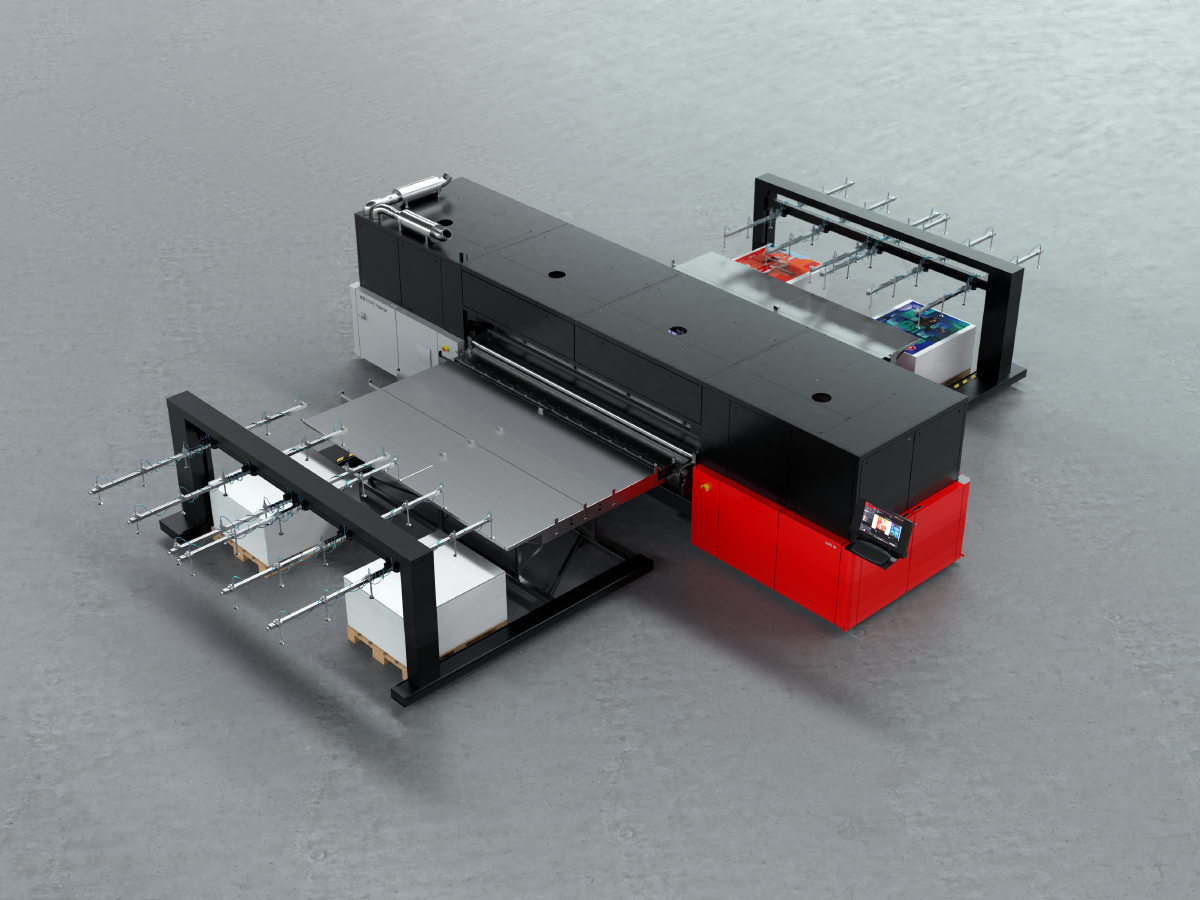
Rival manufacturing behemoth Agfa Graphics also launched a new UV LED inkjet hybrid workhorse called the Jeti Tauro H3300, which builds on the success of the company’s Jet Tauro H2500 device. The company claims the machine is capable of printing up to 3.3m wide at speeds of up to 453m2/hr.
“Its extreme speed becomes even more apparent in the roll-to-roll version, which is capable of handling heavy master rolls in single or dual-roll mode for a wide variety of flexible media,” explains Reinhilde Alaert, marketing product manager of sign and display at Agfa Graphics.
Equally as cutting edge were the new hardware offerings on display from HP. The company unveiled two machines that caught the eye - the HP Latex R2000 and the DesignJet Z. HP claims the former, which uses HP’s water-based latex inks including a white ink, is the first hybrid solution for rigid and flexible sign display printing in one device.
“HP developed this breakthrough technology based on print service providers’ continued request for an HP Latex printer to print on both rigid and flexible materials using our water-based inks,” says Joan Pérez Pericot, general manager, HP large format graphics business. “This introduction is another step forward in how HP creates the best experiences for our customers, continually reinventing the possibilities of print.”
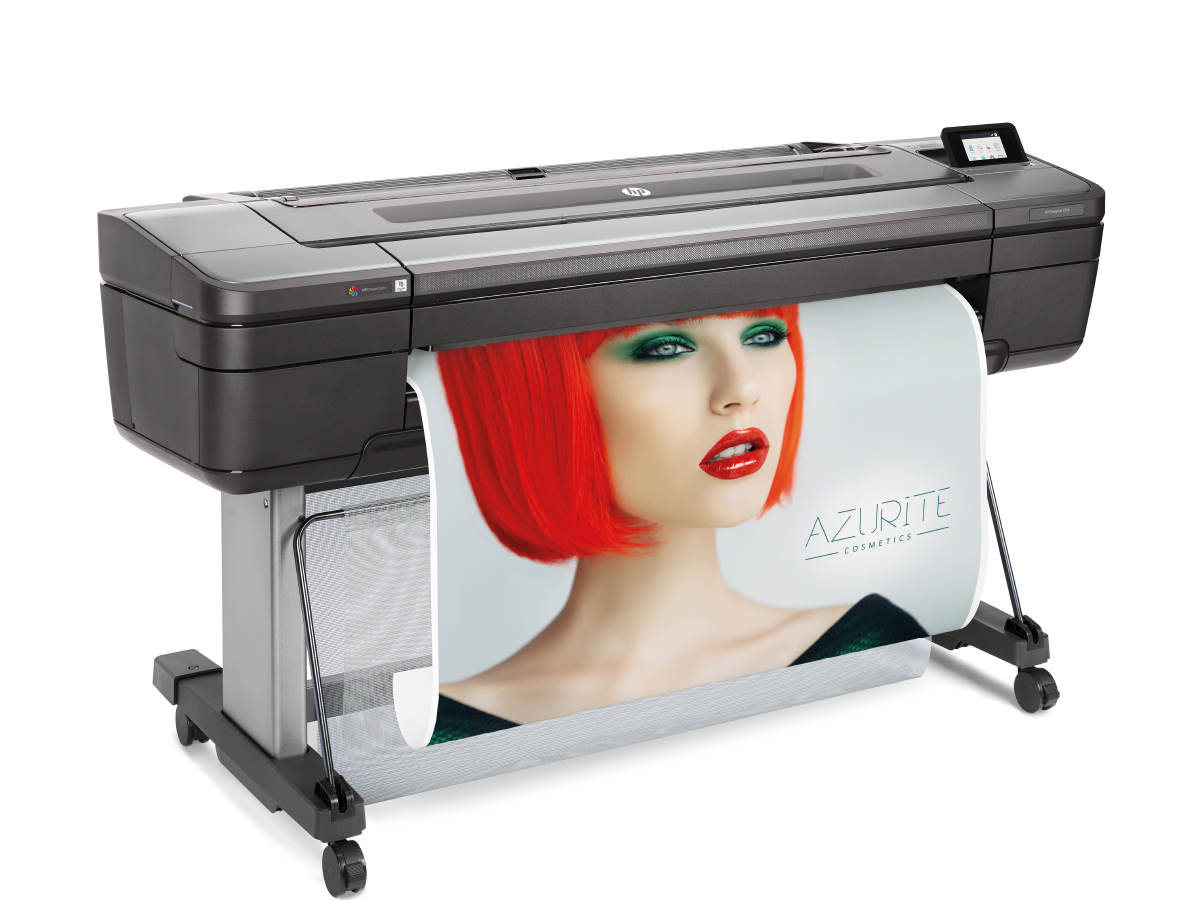
The DesignJet Z printer series - the Z6 and the Z9+ - is available in 24in and 44in formats and was launched to capitalise on the burgeoning large photo merchandising market, which grew by 7% in 2017, according to HP. The beauty of the new series is its ease of use and the quality of output.
“The new DesignJet Z Printer series radically enhances the customer experience and reinvents printing possibilities for both professional photo and signage to ignite business growth and adapt to future needs,” says Guayente Sanmartin, general manager and global head, HP large format design printing. “We thoughtfully designed the new printers to deliver impressive photo quality without compromising time resources and output speeds with the new vertical trimmer and innovative color technologies.”
Just as impressive was Mutoh’s first ever ‘true’ wide-format printer christened the PerformanceJet 2508UF - or the PJ-2508UF for short. This LED UV printer has been developed specifically for print providers that are “looking for premium-margin jobs, high print quality, added value specialty prints, productivity and an attractive environmental footprint,” for the production of a wide range of different signage and graphics, fine art prints and even packaging samples.
The company also unveiled the ValueJet 1638UR - a 64in UV LED roll-to-roll printer suitable for the production of a wide range of high quality graphics, such as customised wallpapers, event banners and exhibition graphics and backlit prints.
“We have seen a considerable increase of sales of our UV LED printers during the past year,” says Kenji Yasuhara, Mutoh Europe’s managing director. “The new ValueJet 1638UR will offer both installed-base (eco)solvent users as well as (offset/screen) printers an opportunity to expand their current product offering towards specialty applications and prints with high added value.”
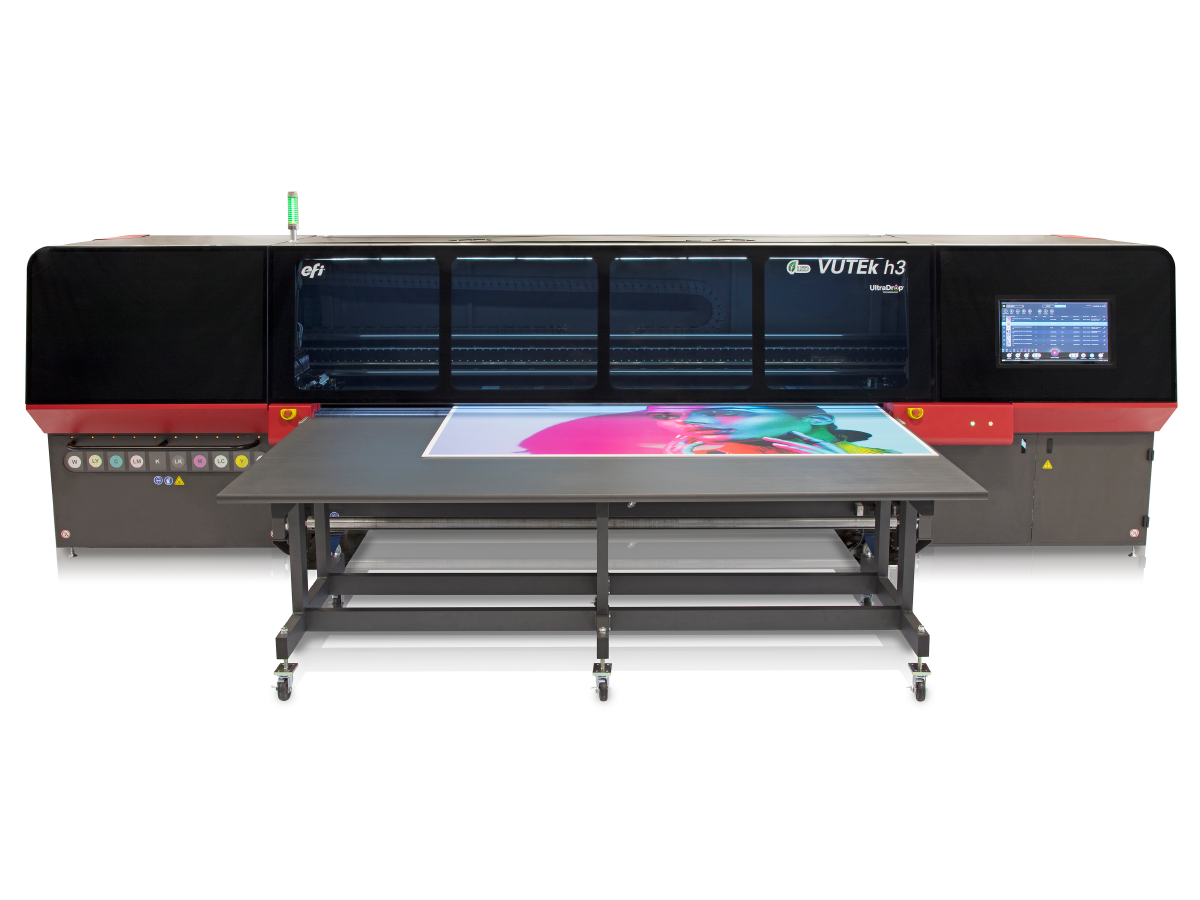
Elsewhere EFI unveiled its next generation hybrid flatbed/roll platform - the 3.2m Vutek h series which comprises the h3 and h5 - the h3 has three rows of 7pl UltraDrop Technology greyscale printheads and the h5 has five. The machines offer 4- or 8-colour+white printing as well as five-layer print capability in a single pass. The new h3 model on display at Fespa 2018 has a maximum throughput of up to 74 boards per hour and the h5 up to 109 boards per hour. Currently in beta, the machines are slated for commercial availability by the end of June and will sit between the GS and HS series machines. Also new from EFI was the Vutek FabriVu 340i aqueous soft signage printer with inline fixation.
Meanwhile, Roland DG showed a number of technology previews at Fespa 2018, including the Texart RT-640M, EJ640 Deco and VersaExpress RF-640.
The new Texart machine is a direct-to-textile printer that will hit the market at below 20,000 Euro. The EJ-640 Deco, as the name suggests, is a machine developed specifically for wallpaper print and will be able to handle both coated and uncoated media. Paul Willems, head of business development and product management EMEA, said tests have proved lightfastness of seven to eight years with good wash and rub ability. The printer is expected to come in somewhere in the mid 20,000 Euros mark.
The VersaExpress RF-640 is an 8-colour printer (added red, orange and green) developed to enable the sign market to better achieve brand/corporate colours. It is expected to have a list price of between 10,000 - 15,000 Euro. Timelines have yet to be given for commercial availability of the new machines.
Sticking with textile printers for a moment, Mimaki showed an has enhanced Tiger 1800B MkII machine that offers a higher 1200dpi print mode and an Advanced Pass System (MAPS) to minimise banding. Bert Benckhuysen, product manager EMEA at Mimaki Europe, said: “The Tiger 1800B MkII printers, available in two models for direct -to -textile and heat transfer sublimation, are another example our strategy to be a total solutions provider. To that end we are also making available a new range of pre-treatment and post-treatment machines, and we are working towards the development of the Internet of Things for textiles and apparel markets.”
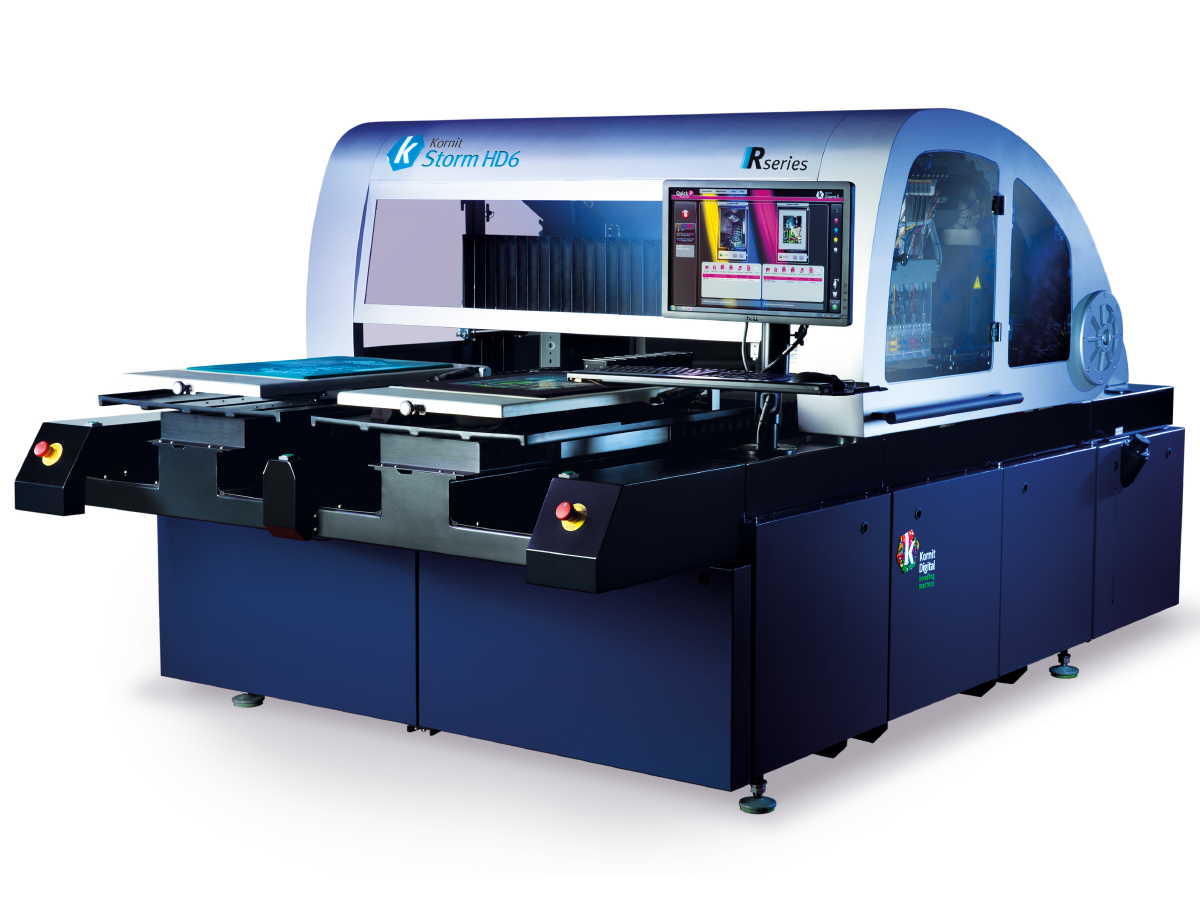
Kornit Digital launched the new Storm HD6 directto-garment printing system, which builds on the back of the launch of the Avalanche HD6. According to the company, the Storm HD, which is targeted at small to mid-size businesses, was launched because “the world of retail as we know it is changing. High demand, short and tailored runs - everyone needs to be able to comply and deliver”. As a result, Kornit has designed the Storm HD so that it can produce runs of between one and 500 copies.
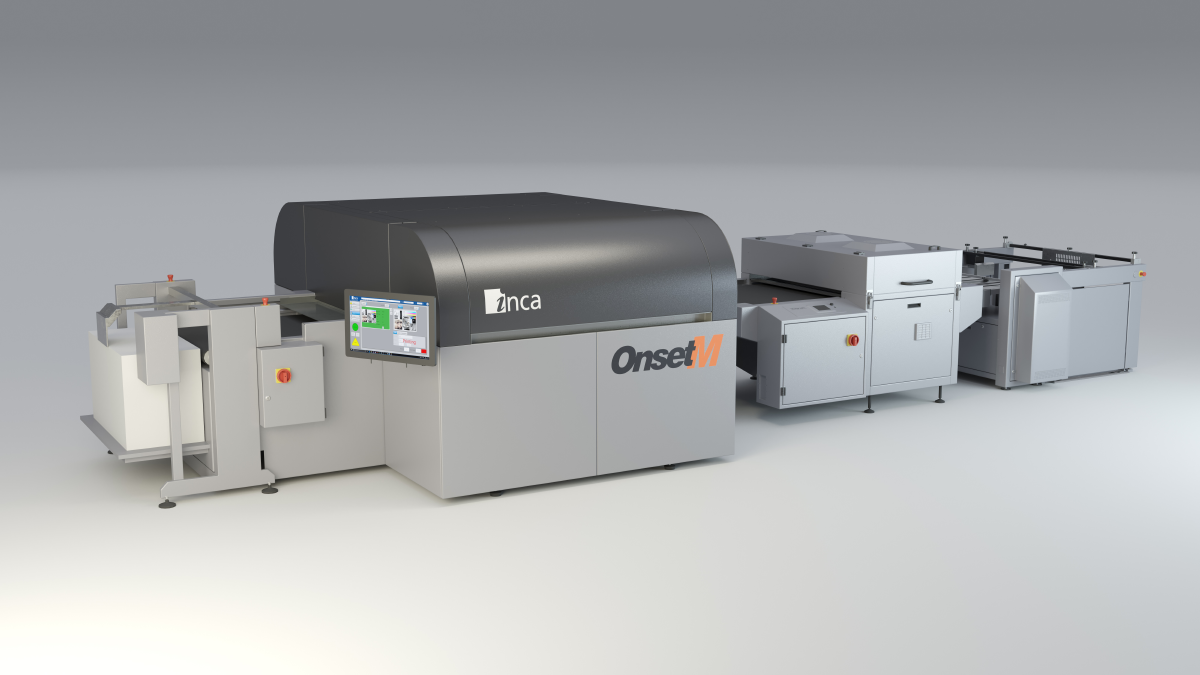
Not to be outdone, Inca Digital showcased its flagship wide-format machine - the Onset X3 - the SpyderX and the new Onset M, which is built on the same architectural platform as the Onset X series and has been specifically developed as a short run B1 solution. According to John Mills, CEO Inca Digital, the company previewed a proof of concept version of the Onset M at Fespa 2017 so it was fitting that Inca gave the machine its official commercial launch at this year’s show.
Another company using Fespa 2018 to unveil a proof of concept device was Ricoh, which showcased an as yet unnamed latex printer. It’s understood the device will come in two widths - 1.3m or 1.6m - and the machine will have a top speed of 40m2/ hr on banner material. Beyond that details are fairly scant. According to a company spokesperson more information on the new machine will be shared sometime this summer.
While the global printer manufacturers rolled out a number of impressive new devices at Fespa 2018 there was plenty of other interesting machinery on display to catch the eye too. Bullmer showed three cutting machines in its Premiumcut range, which comes in widths of 1.6m, 3.2m and 5m, and offers a range of tools for cutting textiles corrugated materials and packaging as well as routing. The company also launched the single-ply cutter EasyCut, which it says is a robust, space saving device. The machine runs in combination with the Scanner Tech scanning beam and AMV unwinding cradle as a versatile solution for sportswear and furnishing as well as other applications.
“The USP and reason for the scanner is that it is much faster than using the reference dots to align the cutting with the print, which is especially relevant on the wider machines,” explains David Bell, managing director at Assyst Bullmer. “The 5m wide cutter with a traditional camera takes around 30 seconds to capture the reference marks and the scanner takes all reference info in under two seconds. The scanner also allows the cutter to automatically cut around the printed image simply following the contour.”
While new hardware launches usually attract more attention at trade shows the big push this year from many manufacturers was to focus on innovative applications. Ricoh produced a range of items on its devices, from custom wall boards and banners, through to hats and bags, and Agfa Graphics utilised virtual reality glasses and touchscreen technology to offer interactive sensory experiences that showcased its next generation inkjet printing devices, including the new Jeti Tauro H3300 LED.
OKI also focused heavily on the applications front, with its ColorPainter large-format printers producing wallpaper at the show. Rob Brown, head of industry print UK at OKI, says the company hadn’t really targeted this area before, as the vast majority of the work historically produced on its ColorPainter range was for the signage industry, however, the machines were recently voted best in class for wallpaper prints at the BLI Awards so the company wants to push this application to existing and potential new customers.
The other thing Brown says was particularly noticeable about this year’s Fespa 2018 was the interest registered in the smaller format and added value devices the company manufactures, such as the Pro9000 Series Envelope Print System, which it displayed at the show for the first time.
“Historically Fespa was a wide-format show, but we were showing all of our machines and there was an equal amount of interest in our toner-based products and smaller-format stuff than there was in the widerformat machines so that was a bit of an eye opener for us,” says Brown. “I’m not sure what drove that level of interest. Whether it was because we were showing something that was different [to the vast range of wide-format devices on display], or whether people are wanting to try and find something additional that they can offer their customers.”

